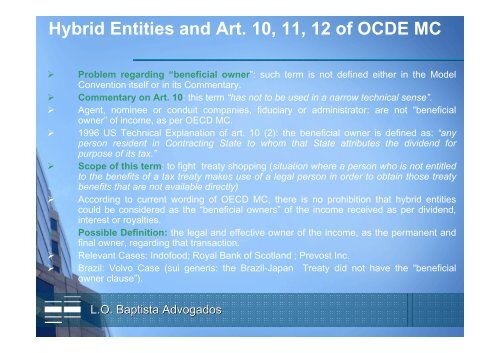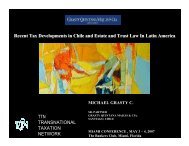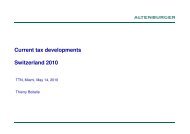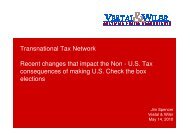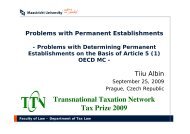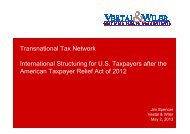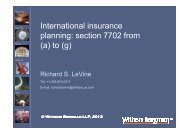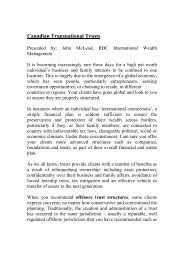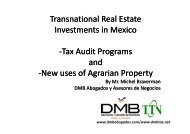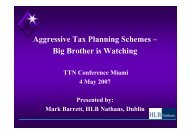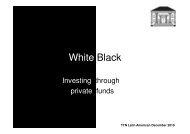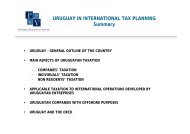Hybrid Entities
Hybrid Entities
Hybrid Entities
You also want an ePaper? Increase the reach of your titles
YUMPU automatically turns print PDFs into web optimized ePapers that Google loves.
<strong>Hybrid</strong> <strong>Entities</strong> and Art. 10, 11, 12 of OCDE MC<br />
‣ Problem regarding “beneficial owner”: such term is not defined either in the Model<br />
Convention itself or in its Commentary.<br />
‣ Commentary on Art. 10: this term “has not to be used in a narrow technical sense”.<br />
‣ Agent, nominee or conduit companies, fiduciary or administrator: are not “beneficial<br />
owner” of income, as per OECD MC.<br />
‣ 1996 US Technical Explanation of art. 10 (2): the beneficial owner is defined as: “any<br />
person resident in Contracting State to whom that State attributes the dividend for<br />
purpose of its tax.”<br />
‣ Scope of this term: to fight treaty shopping (situation where a person who is not entitled<br />
to the benefits of a tax treaty makes use of a legal person in order to obtain those treaty<br />
benefits that are not available directly)<br />
‣ According to current wording of OECD MC, there is no prohibition that hybrid entities<br />
could be considered as the “beneficial owners” of the income received as per dividend,<br />
interest or royalties.<br />
‣ Possible Definition: the legal and effective owner of the income, as the permanent and<br />
final owner, regarding that transaction.<br />
‣ Relevant Cases: Indofood; Royal Bank of Scotland ; Prevost Inc.<br />
‣ Brazil: Volvo Case (sui generis: the Brazil-Japan Treaty did not have the “beneficial<br />
owner clause”).<br />
L.O. Baptista Advogados


